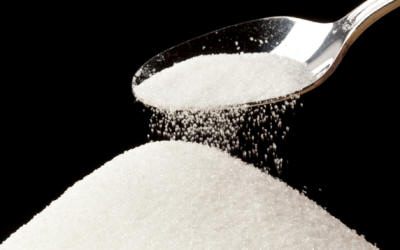|
It’s becoming increasingly clear that aspartame is bad news.
But what about the other artificial sweetener, sucralose (Splenda)? Is Splenda safe?
Known commercially as Splenda, sucralose is a synthetic product - a chlorinated sugar molecule - of McNeil Nutritionals, LLC, a subsidiary of Johnson & Johnson. Splenda continues to be avidly used by consumers watching their weight and blood sugar.
The Calorie Control Council is only too happy to tear apart arguments that Splenda may not be as safe as purported, including studies - even by the prestigious Duke University - and assertions by alternative medicine practitioners like Dr. Mercola, who compared sucralose to DDT.
Splenda and DDT
As The Examiner states,
The Calorie Control Council (CCC) claims, rightfully, that DDT is virtually insoluble in water and soluble in fats, such as those found in the body.
Splenda’s makers have admitted that, on average, 15 percent of sucralose is absorbed. (Remember that that’s an average, meaning some people may absorb significantly more, others significantly less.)
Because sucralose is not a naturally occurring product, however, it might be safe to say that the body, unable to metabolize it, absorbs it via the digestive system and ultimately stores it in the body. (Perhaps a scientist can peaceably weigh in on this.)
Sucralose and the Gut
Its absorption by the digestive system may explain why researchers at Duke University in 2008 found that Splenda negatively alters gut microflora in rats and may limit the bioavailability of drugs and nutrients (See 'Splenda Alters Gut Microflora and Increases Intestinal P-Glycoprotein and Cytochrome P-450 in Male Rats' as published in the Journal of Toxicology and Environmental Health.)
A myriad other studies showing Splenda’s adverse effects - ranging from bowel disturbances, kidney mineralization, and tumor growth - can be reviewed here.
In one human (albeit small) study, nutritionist Tamara Duker Freuman found that,
Human Bias Affecting Studies
Although the CCC accuses studies like Duke’s as having flaws (specifically, “lack of proper control groups”), one may say the same of the studies used in defense of Splenda.
One cited often was published in the November 2010 issue of Food and Chemical Toxicology, in which sucralose was found to have no genotoxicity.
It’s worth noting, however, that the makers of Splenda co-authored the study. Keep in mind, too, that Johnson & Johnson (affiliated with Splenda) was recently hit with a $1 billion fine for marketing Risperdal for unapproved uses and regularly puts toxins like formaldehyde, parabens, and phthalates in many of its products.
It was only in 2011 that they promised to take known and possible carcinogens out of its infant care products, and it will take them until 2015 (allegedly) to do the same for adult toiletries.
Here is some information regarding the 110 studies proving Splenda’s safety:
Consumer-Reported Side Effects
Consumers of Splenda have themselves come forward with complaints (which can admittedly have mitigating factors), including:
It’s apparent that well-conducted, unbiased studies are lacking.
It might be time to buckle down and sit through a few more human trials. Besides, if Splenda is so safe, it’s likely scientists will face no difficulty in finding willing test subjects.
For now, though, it’s probably best to avoid the artificial sweetene
|

